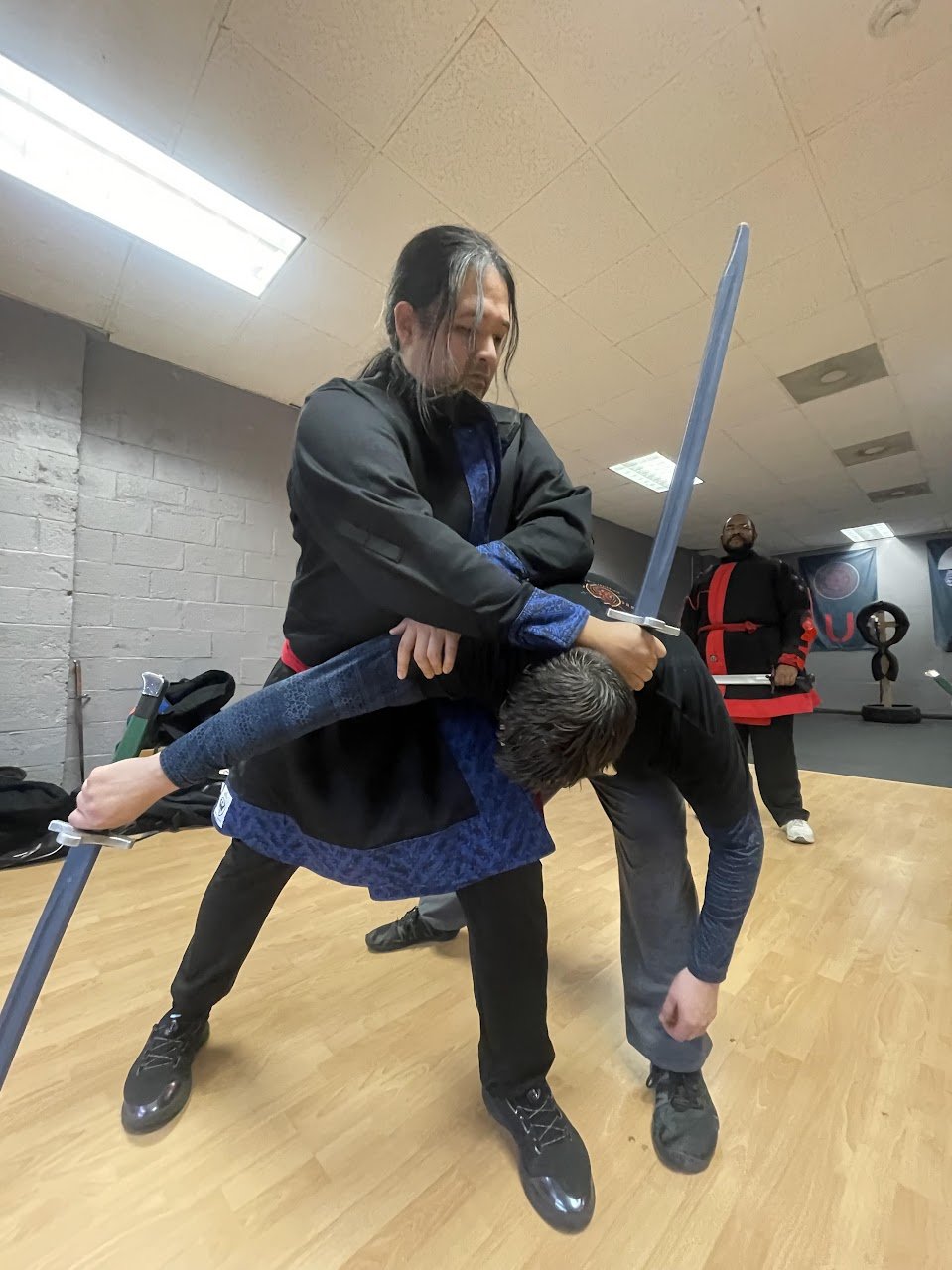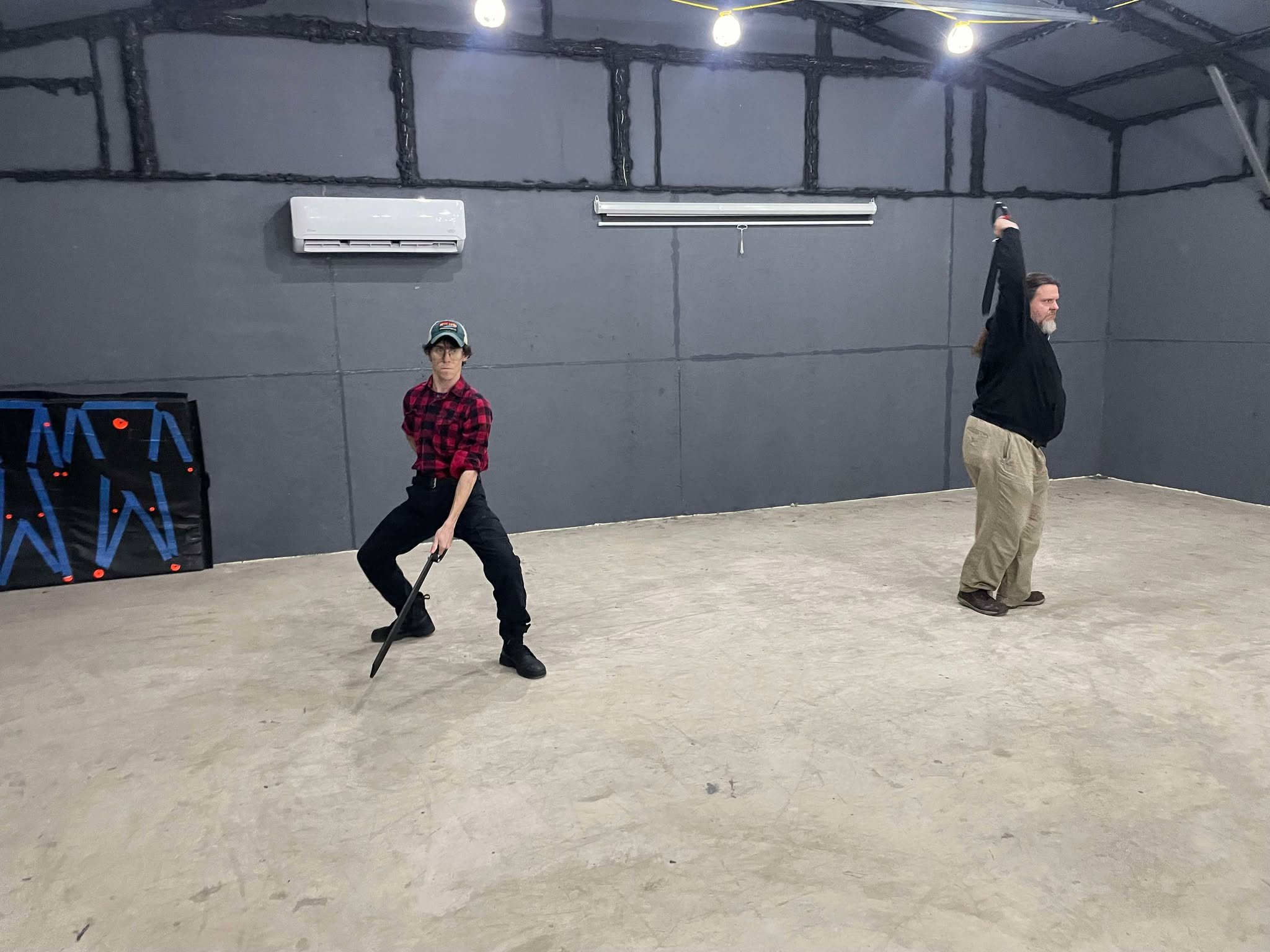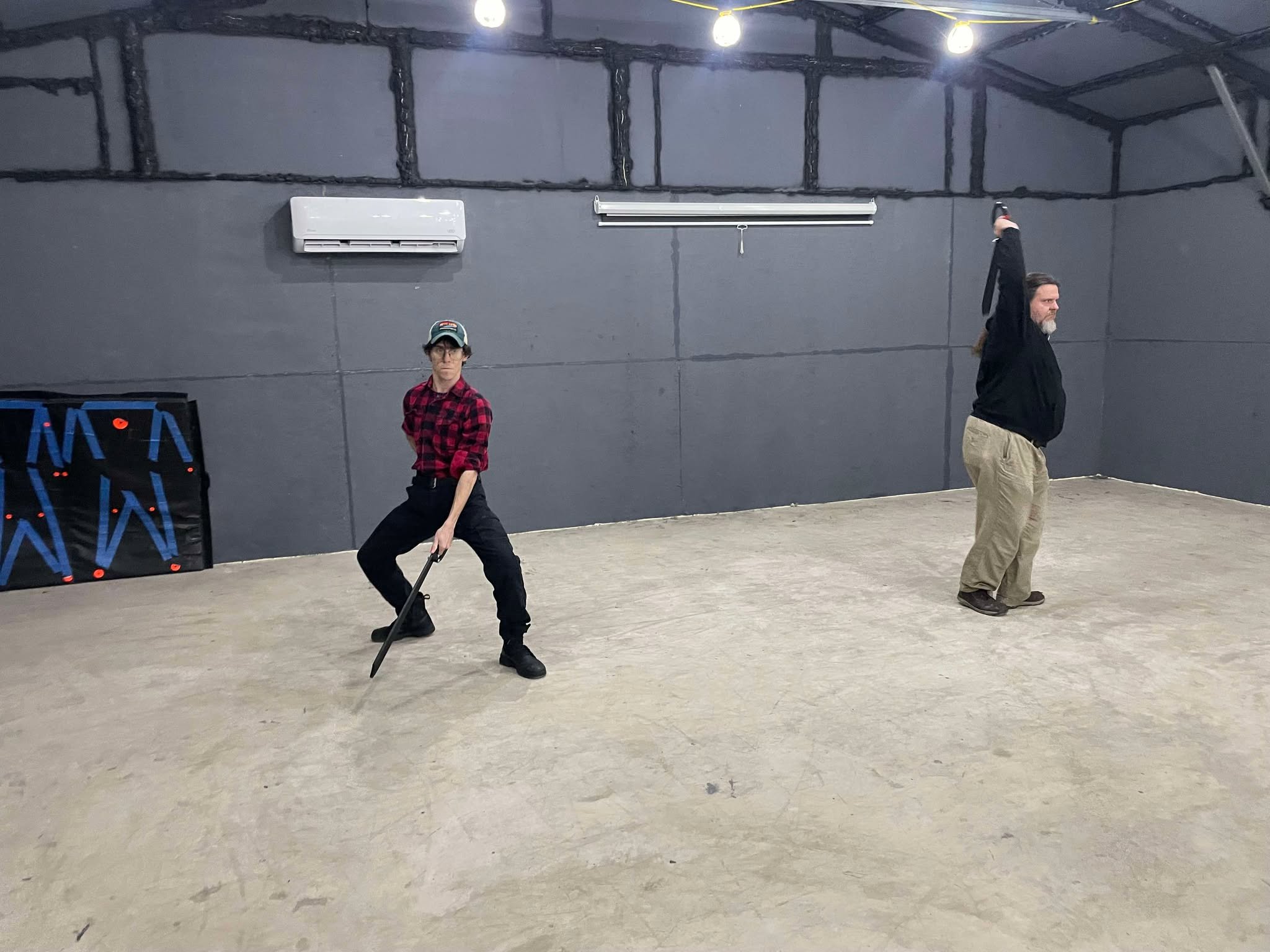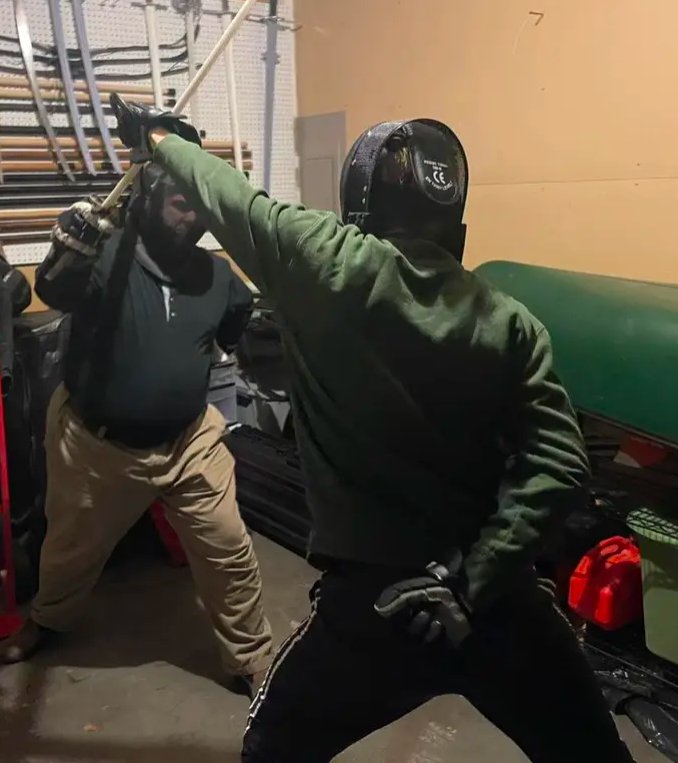
OUR MESSER CLASSES
Mondays at 7:30PM-8:30PM
We teach the Langes Messer using both traditional manuscripts and a practical approach through sparring. Being a self-defense sword, the langes messer is taught as a standalone weapon, with a buckler, and with a dagger at different times through a student’s progression! The langes messer is a very dynamic and fun weapon to learn as not only will you be focusing on the fencing aspect of its use, but grappling and binding as well.
Like all of our classes, we pride our club on being welcoming to those of all experience levels. You can be a skilled fencer or a beginner and still get a lot of out the classes! Please feel free to check out our GEAR GUIDE page to see our equipment recommendations to start your langes messer training.
Feel free to reach out about our classes at any time if you have questions! Visit our GEAR GUIDE page to see what equipment you need to get started!
GALLERY
























LANGES MESSERS - THE LONG KNIFE
The Langes Messer (long knife) was a versatile, single-handed weapon that originated in Germany and became widely used across Europe between the 14th and 16th centuries. Typically weighing between 1 and 2.5 pounds and with a blade length ranging from 24 to 33 inches, it was a practical weapon for everyday carry, especially for self-defense and agricultural work. While it was usually a single-edged sword, many featured a partially sharpened back edge. The compact size and relatively low production costs made the Langes Messer a popular choice for common folk, though it was also favored by travelers and mercenaries. Its hilt, unlike those of traditional swords, was slab-sided, resembling the handle of a large knife rather than a knightly sword, further distinguishing it from other weapons of the time.
NOT JUST USED BY PEASANTS
Though the Langes Messer was primarily associated with peasants, it was by no means exclusive to the lower classes. The weapon was also crafted for nobility, with some pieces being intricately designed and highly decorative. A notable example is the Messer made for Archduke Maximilian I, which was ornately embellished and served as a symbol of prestige. While many messers were functional and unadorned, some were meticulously crafted for the wealthy and the warrior class. Knights and men-at-arms also carried these swords, using them in battle and as part of their personal armament. Thus, the Langes Messer transcended its humble beginnings, becoming a weapon of choice for a range of social classes.
DESIGNED FOR SELF-DEFENSE
In contrast to the larger, two-handed swords used by knights, the Langes Messer was specifically designed for personal defense. Its manageable size made it ideal for commoners, mercenaries, and travelers who needed a weapon that could be easily carried and quickly deployed. Due to its widespread use, numerous fencing manuals were written, including works by renowned masters such as Johannes Lecküchner, Hans Talhoffer, and Albrecht Dürer. These texts provided detailed instructions on how to wield the Messer, incorporating techniques for striking, grappling, and even binding an opponent's weapon.
Learning to fight with the Langes Messer was not just about slashing; it involved complex movements, including countering attacks, inflicting debilitating injuries, and controlling the opponent's weapon. As one of the most common weapons carried on the streets of medieval Europe, the Messer was second only to the hand knife in terms of availability and use. Its practical design and ease of training made it a key part of everyday combat and self-defense.



